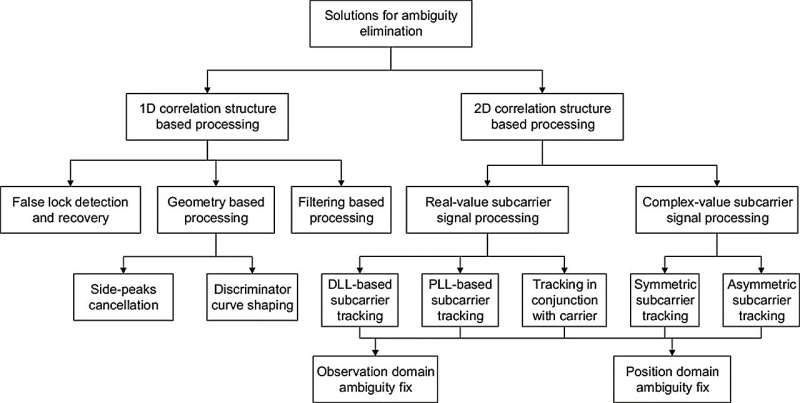
August 5, 2024 by Tsinghua University
Collected at: https://techxplore.com/news/2024-08-clarity-skies-subcarrier-modulation-gnss.html
The integration of subcarrier modulated signals into Global Navigation Satellite Systems (GNSS), has brought forth new layers of complexity in signal acquisition and tracking, stemming from their distinctive structure. Although these signals promise enhanced spectral compatibility and superior ranging precision, they also introduce ambiguity threats to the stability of standard GNSS operations.
The complexities of their Auto-Correlation Function (ACF) and the risks of false lock situations underscore the urgent need for innovative signal processing methods. This demand drives an essential exploration into unambiguous processing techniques, critical for propelling GNSS technology forward.
Academics from Tsinghua University have presented a sweeping review in Satellite Navigation. Released on July 16, 2024, this scholarly work offers an exhaustive examination of subcarrier modulated signal processing, spotlighting recent breakthroughs and pioneering new strategies to confront existing ambiguities in signal acquisition and tracking.
This research paper meticulously dissects the latest methodologies for handling subcarrier modulated signals within GNSS, with a sharp focus on crafting unambiguous acquisition and tracking mechanisms. It probes into the intricate composite subcarrier modulated signal structures, particularly those in use within the BeiDou Navigation Satellite System (BDS) and Galileo’s E5 band.
The paper brings to light multidimensional tracking loops as an innovative solution to ambiguity, presenting a novel angle on signal processing. It also examines the capacity of these signals to bolster thermal noise immunity and combat multipath interference, marking a significant stride in GNSS signal processing toward the creation of more precise and trustworthy navigation systems.
Dr. Zheng Yao, the study’s lead author and a preeminent figure in satellite navigation, underscores the research’s significance, noting, “Our review not only synthesizes the current landscape of subcarrier signal processing but also paves the way for future innovations. The refinement of unambiguous processing techniques is fundamental to ensuring the dependability and exactitude of forthcoming GNSS applications.”
The research bears far-reaching implications, providing a solid framework that empowers GNSS receivers to attain heightened positioning accuracy. With the capacity to expedite the convergence pace of Precise Point Positioning (PPP) and amplify the effectiveness of Single Point Positioning (SPP), these discoveries are poised to transform navigation systems across aviation, maritime, and terrestrial transport sectors. This signals the dawn of an era characterized by unprecedented navigational precision.
More information: Zheng Yao et al, Subcarrier modulated navigation signal processing in GNSS: a review, Satellite Navigation (2024). DOI: 10.1186/s43020-024-00142-9

Leave a Reply